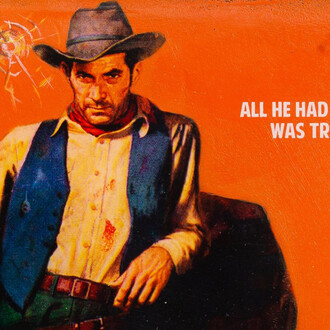Playing with the classic codes of human portraiture, Sophie Gamand challenges the genre by using dogs as models, offering an alternative to the traditional way we look at these animals. Sophie Gamand celebrates what is most human in dogs, and pays tribute to these multi-faceted beings who have accompanied mankind for millennia, marking art history alongside humans, to the point where they now resemble us more than we wish to admit. The artist thus captures their personality, their individuality and in a word, their souls.
At a time when humanity is becoming increasingly aware of the damage to our environment, and when animal anthropomorphism is no longer considered a fanciful myth, the work of Sophie Gamand suggests a new artistic perspective on the most faithful companion of man.
Using rescue pit bulls from American shelters as models, the artist humanizes those who have been rejected by a society that created them.
Before her, Murillo, Toulouse Lautrec, Picasso, Egon Schiele, Cindy Sherman, and many others have explored their fascination for subjects existing in the margins of society: prostitutes, beggars or street children, "monsters of every kind"... The models used for "FLOWER POWER" testify to the greatest of human contradictions: created by men, genetically modified, manipulated and enslaved, pit bulls have been betrayed by their own creators. By adorning them with crowns made of lush flowers, the artist reminds the viewer of their intrinsic value, their fragility and preciousness, and the equal nature of all life from a universal standpoint.
The "Flower Power" portraits’ opulence forces us to look straight at these creatures, and witness their deep and touching true nature. The work of Sophie Gamand put us in direct contact with the eyes of her subjects, dramatically reducing the emotional distance between the viewer and the hounds.
Indeed, pit bulls are the most misunderstood dogs in the world. Associated with violence, gangs and deemed vicious, hundreds of thousands of them are euthanized each year in the United States alone. Here, Sophie Gamand erects them in symbols of the "throwaways", disposable lives in a society that over-consumes and that maintains an abusive and complex relationship with its environment and nature in general.
The floral motif is omnipresent, giving its title to the series: "Flower Power”, and playing a key role in the humanization process as well as in the interpretation of these portrait.
Like Arcimboldo in the 16th century, Sophie Gamand uses natural elements to provide, by association, specific traits to the characters she develops.
The transience of flowers, used here like a “New Age mannerism", reflects the inevitable fate of all matter, degeneration, decomposition stages, and the ultimate destruction.
Placed on impressive, large hounds, the delicate flowers take an even deeper and symbolic dimension.
"Flower Power" also flirts with the kitsch work of Pop’Art’s greatest artists. Here, the word kitsch is understood in its most noble definition, as described by German writer Frank Wedekind, "Kitsch is the present form of Gothic, Rococo, Baroque". Therefore the kitsch referenced by Sophie Gamand’s work is a contemporary form of the baroque or rococo movements, as evidenced by the decorative overload, the exuberance, the accumulation of harmonized contradictions, and the obsessive use of flowers. The works of Sophie Gamand belong to the same family as those of Jeff Koons or the flowery glamorous portraits of the kings of kitsch Pierre et Gilles.








![Betsabeé Romero, Al reverso de la pista [On the other side of the track], exhibition view. Courtesy of Blanton Museum](http://media.meer.com/attachments/e34357b533edcabd157cd23df35e2397c276a6bf/store/fill/330/330/a18279d745d1c0fe495891cad1f670b7d648211d009bb1e394576baaaa61/Betsabee-Romero-Al-reverso-de-la-pista-On-the-other-side-of-the-track-exhibition-view-Courtesy.jpg)



